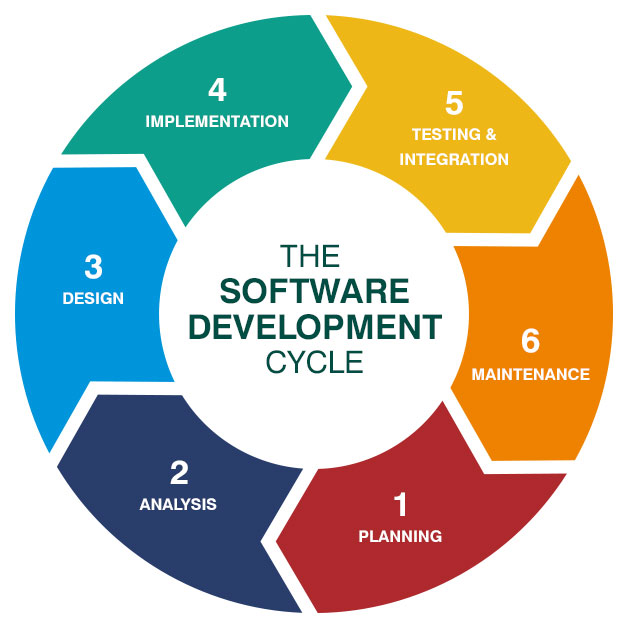Unlocking Advancement Possible: Extraordinary Software Program Development Techniques
With the development of unmatched software advancement techniques, organizations currently have access to effective devices and methodologies that can revolutionize their approach to technology. By embracing these techniques, companies can streamline their advancement procedures, make sure software quality, bridge the void between advancement and procedures, and enhance client fulfillment. Through a comprehensive exploration of these strategies, this post aims to offer useful understandings for unlocking innovation potential in the realm of software application growth.
Agile Methodologies and Their Impact
Dexterous methodologies have had an extensive influence on software application growth practices. With their focus on adaptability, cooperation, and repetitive advancement, Agile methods have changed the method software application is designed, created, and provided.
One of the key advantages of Agile methods is the ability to respond quickly to changing demands and client responses. By damaging down complex projects right into smaller, convenient tasks called sprints, Agile allows development groups to supply functioning software program incrementally. This repetitive technique allows constant screening, evaluation, and adjustment, leading to better software and lowered time-to-market.

Additionally, Agile techniques focus on client satisfaction by involving stakeholders throughout the development process - Innovative Software Development. By soliciting frequent feedback and incorporating it into the advancement cycle, Agile guarantees that the resulting software program meets the developing requirements and assumptions of the end-users
Continuous Integration: Streamlining Advancement Procedures

CI works by instantly building and checking the integrated code, making sure that it meets the high quality criteria set by the team (Innovative Software Development). By constantly integrating code modifications, programmers can identify and take care of bugs or disputes in real-time, reducing the moment and initiative required for fixing later on in the development cycle. In addition, CI allows groups to receive instant comments on the influence of their code adjustments, enabling faster models and extra effective cooperation
Implementing CI calls for the use of specialized tools and infrastructure to automate the combination and screening procedures. These devices can instantly compile code, run tests, and generate reports, supplying groups with beneficial insights into the health and stability of their software program.
Test-Driven Development: Ensuring Software Program Quality
Test-Driven Advancement plays a vital duty in ensuring the quality of software application by assisting designers to write tests prior to carrying out the matching code changes. This technique, also recognized as TDD, complies with a strict cycle of composing a falling short test, carrying out the minimum amount of code called for to pass the examination, and afterwards refactoring the code to boost its style and maintainability.
By writing examinations initially, designers have a clear understanding of what the software useful link should do prior to they even start coding. This assists them focus on fulfilling the desired functionality and makes certain that the software application behaves as anticipated. Furthermore, TDD offers a safeguard for designers when making changes or including new attributes. The tests work as a type of paperwork, making it easier to comprehend the code and determine any kind of unintentional consequences of adjustments.
Furthermore, TDD encourages modular and loosely paired code, making it much easier to refactor and maintain. It additionally assists catch bugs early in the advancement process, minimizing the time and initiative invested on debugging and taking care of concerns later.
Devops: Linking the Void Between Development and Workflow
One key facet of software program development that promotes cooperation and improves efficiency is the application of Devops techniques. Devops, a mix of advancement and operations, intends to link the void between these two commonly separate divisions. It focuses on damaging down silos and developing a culture of collaboration and interaction.
Devops practices include integrating development and procedures teams to simplify the software application advancement lifecycle. This includes automating processes, such as continuous integration and continuous release, to ensure faster and a lot more constant software releases. By automating recurring tasks, developers can concentrate on technology and supplying worth to clients.
In addition, Devops motivates using agile methods, such as Scrum or Kanban, to allow repetitive and incremental development. This permits faster comments loops and faster time-to-market.
Along with fostering collaboration, Devops also stresses the significance of monitoring and feedback. By implementing surveillance devices and practices, advancement and operations groups can recognize and address issues in real-time, making certain the security and performance of the software application.
User-Centered Design: Enhancing Client Complete Satisfaction
User-centered design plays an essential role in improving consumer complete satisfaction by prioritizing their demands and choices throughout the software program development process. Considering completion individuals' needs and assumptions aids in creating software that is user-friendly, easy to use, and meets their certain demands. By embracing a user-centered design method, software application advancement teams can make certain that the end product straightens with the individuals' objectives and offers a more pleasurable and smooth experience.
One key facet of user-centered layout is carrying out detailed customer study. This includes event details concerning the target market, their preferences, behaviors, and demographics. The insights acquired from this research assistance in understanding the users' demands, discomfort factors, and inspirations. This info is after that used to educate the design and advancement decisions, making certain that the software application meets the individuals' expectations.
Another vital element of user-centered design is functionality testing. This entails gathering and observing feedback from customers as they engage with the software. By examining the software with genuine customers, developers can determine any kind of functionality issues, discomfort factors, or areas of enhancement. This feedback is very useful in fine-tuning the layout and making needed adjustments to improve the general customer experience.
Final Thought
To conclude, making use of active methods, constant assimilation, test-driven development, DevOps, and user-centered style have actually changed software program growth strategies. These strategies have actually made it possible for software application groups to enhance growth processes, guarantee software application quality, bridge the space between advancement and operations, and boost client complete satisfaction. By adopting these innovative techniques, organizations can unlock their complete advancement capacity and stay in advance in today's affordable market.
By embracing these techniques, companies can simplify their advancement processes, ensure software top quality, bridge the void between development and procedures, and boost consumer satisfaction.With the change in the direction of more dynamic and customer-centric software development methods, constant assimilation has actually arised as a vital process for enhancing growth and boosting collaboration within teams.Devops practices involve integrating advancement and procedures groups to simplify the software program advancement lifecycle.In conclusion, the usage of active methods, continuous integration, test-driven development, DevOps, and user-centered layout have reinvented software application development strategies. These techniques have made it possible for software program groups to enhance advancement processes, ensure software program high quality, bridge the see here void between development and operations, and improve client satisfaction.